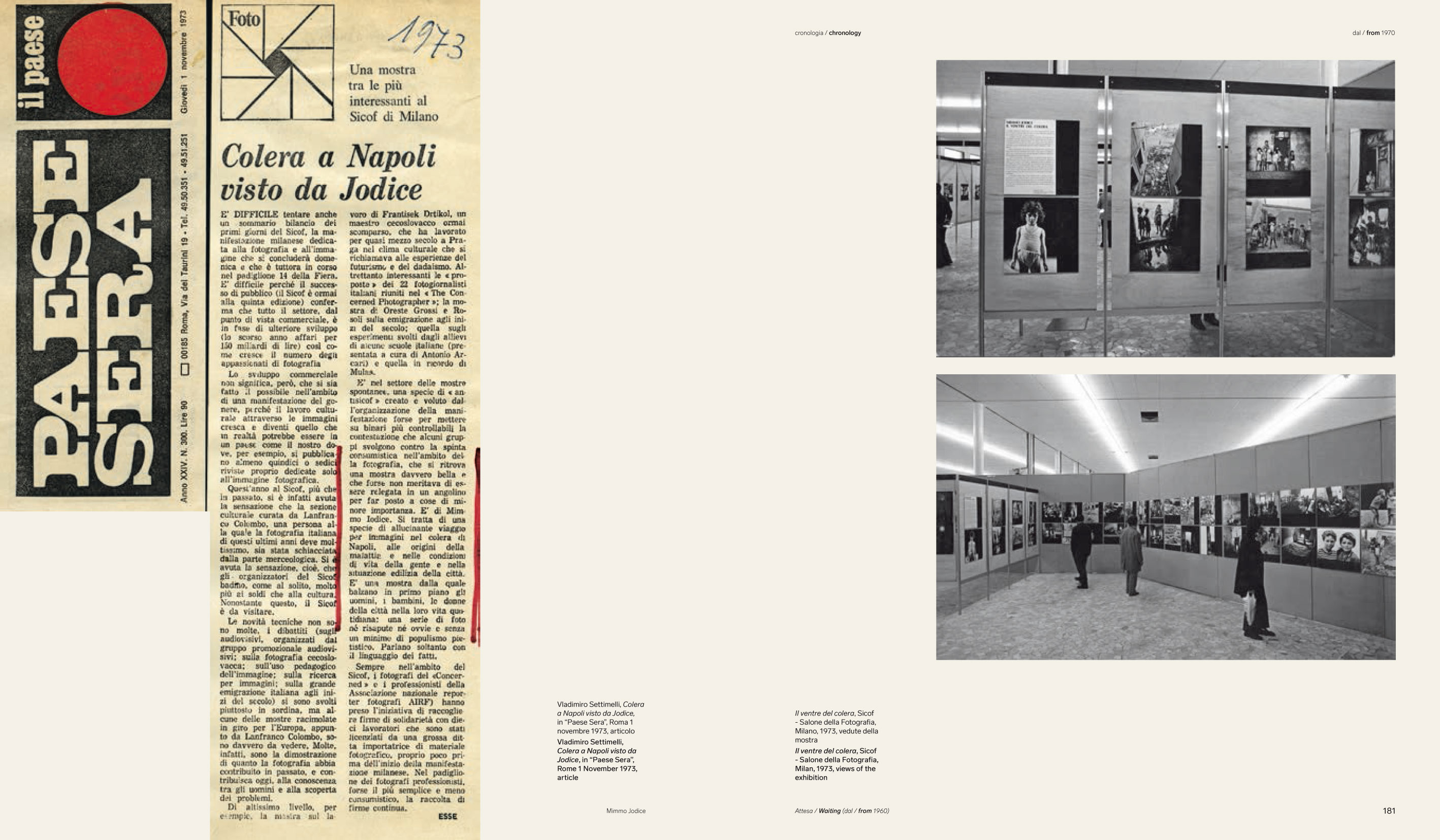Electa closes 2018 with Attesa/ Waiting (dal / from 1960), the first retrospective monograph devoted to Mimmo Jodice (Naples, 1934). The volume, produced by the Donnaregina Contemporary Art Foundation, is a reconstruction in images. The documents, many of them previously unpublished, are the result of two years spent conducting research in the artist's archives.
“The last, ultimate book about my research,” as Jodice himself described it, grew out of Attesa 1960-2016, the exhibition curated by Andrea Viliani at the Madre in 2016. Seven sections based on recurring themes in Jodice's work cover a time constituted by associating the contents, without a rigid chronological criterion: a circular time, which constantly returns to its inspiring motives.
The seven sections also mark the development of the volume:
1. Research works, since 1960
2. Everyday theatricality in Naples, or the portrait of a people, since 1970
3. Cities and nature, or the landscape (from views of Naples to invisible cities), since 1980
4. Archaeologies and Mediterraneans, since 1985
5. Eden, or nature and still life, since 1995
6. Transits, or stories of art, since 2008
7. Waiting, from 2016
“The last, ultimate book about my research,” as Jodice himself described it, grew out of Attesa 1960-2016, the exhibition curated by Andrea Viliani at the Madre in 2016. Seven sections based on recurring themes in Jodice's work cover a time constituted by associating the contents, without a rigid chronological criterion: a circular time, which constantly returns to its inspiring motives.
The seven sections also mark the development of the volume:
1. Research works, since 1960
2. Everyday theatricality in Naples, or the portrait of a people, since 1970
3. Cities and nature, or the landscape (from views of Naples to invisible cities), since 1980
4. Archaeologies and Mediterraneans, since 1985
5. Eden, or nature and still life, since 1995
6. Transits, or stories of art, since 2008
7. Waiting, from 2016
In Attesa / Waiting (dal / from 1960) the artist’s areas of interest are analysed from the beginning of the year when each research project began, while the structure of the biographical and bibliographic apparatus is organized by themes and enriched by images and archival materials, an instrument of study and visual testimony of Jodice's complex research.
In the essays, Salvatore Settis deals with the relationship between archaeological subject, photographic representation and critical reinterpretation. Ester Coen analyses the close relationship between Jodice's research and the Italian Metaphysical movement and, in part, Surrealism, sources of inspiration for all of Jodice’s practice. Nicola Spinosa develops the theme of the relationship between the master and the Baroque in Naples. Marta Gili and Tina Kukielski explore photography, analysing its relations with conceptual research in the 20th century.
The book ends with an interview between Hans Ulrich Obrist and the artist and the insights of Andrea Viliani into the themes of the exhibition at the Museo Madre. At the end of each section is a large selection of works chosen by Jodice himself. The work of Jodice, a self-taught artist, transcends the distinction between the arts and is a milestone in the social and cultural evolution of photographic practice. Naples offers a constant frame of reference, described by fragments of vision: the cholera epidemic, the folklore of its popular festivals, the vitality of the ancient and the architecture of the suburbs that becomes a monument, all the way to the documentation of the most flourishing period of contemporary art in the city and the artists who “transited” the city.
The sixty years of Jodice’s research documented in Attesa / Waiting (dal / from 1960) are a visual encyclopaedia of phenomena, experiments and statements that have written the history of art and photography in the last 50 years.
In the essays, Salvatore Settis deals with the relationship between archaeological subject, photographic representation and critical reinterpretation. Ester Coen analyses the close relationship between Jodice's research and the Italian Metaphysical movement and, in part, Surrealism, sources of inspiration for all of Jodice’s practice. Nicola Spinosa develops the theme of the relationship between the master and the Baroque in Naples. Marta Gili and Tina Kukielski explore photography, analysing its relations with conceptual research in the 20th century.
The book ends with an interview between Hans Ulrich Obrist and the artist and the insights of Andrea Viliani into the themes of the exhibition at the Museo Madre. At the end of each section is a large selection of works chosen by Jodice himself. The work of Jodice, a self-taught artist, transcends the distinction between the arts and is a milestone in the social and cultural evolution of photographic practice. Naples offers a constant frame of reference, described by fragments of vision: the cholera epidemic, the folklore of its popular festivals, the vitality of the ancient and the architecture of the suburbs that becomes a monument, all the way to the documentation of the most flourishing period of contemporary art in the city and the artists who “transited” the city.
The sixty years of Jodice’s research documented in Attesa / Waiting (dal / from 1960) are a visual encyclopaedia of phenomena, experiments and statements that have written the history of art and photography in the last 50 years.



